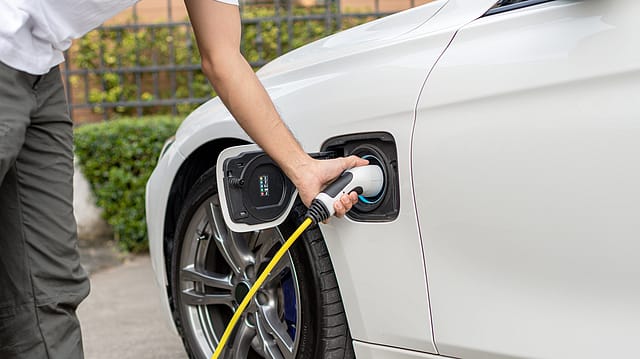EVs corner 80% of automakers' capex for next 3 years
ADVERTISEMENT

Electric vehicles account for 80% of the total capex of Indian original equipment manufacturers (OEMs) for the next three years as companies race to develop or expand their EV portfolio, according to India Ratings and Research (Ind-Ra).
However, given that a large part of these are announcements, actual execution on the ground will be contingent on the sustainability of demand growth which may need support from subsidies and the development of adequate charging infrastructure, the rating agency says.
In a scenario where this capex is executed as scheduled, Ind-Ra does not expect a material change in the credit profiles of established internal combustion engine (ICE)-focused OEMs given their low leverage. New players backed with equity capital and traction, however, will need to establish a viable business model towards cash flow generation, it says.
Auto OEMs’ project announcements highlight their continued foray into the EV segment. Of the 60 capex projects undertaken by auto OEMs during FY24 and the first three months of FY25 totalling ₹1.53 lakh crore, 79% (₹1.22 lakh crore) are guided towards EVs. Over 90% capex in the two- to three-wheelers and heavy & light commercial vehicle segments and 62% capex in passenger vehicles (PVs) have been in EVs.
December 2025
The annual Fortune 500 India list, the definitive compendium of corporate performance, is out. This year, the cumulative revenue of the Fortune 500 India companies has breached $2 trillion for the first time. Plus, find out which are the Best B-schools in India.
Within the EV ecosystem, projects worth ₹44,100 crore have been announced under PVs (36% of the announced capex for EV ecosystem), followed by ₹54,700 crore (44%) under the two-three wheelers category (2/3Ws) and ₹23,200 crore (19%) under heavy/light commercial vehicles (CVs).
However, 60% of the projects are at planning stage and would take three to four years for completion. The estimated capex amount is likely to be invested by FY27-FY28. Established players have contributed 41% to the upcoming EV capex and 59% are new entrants.
The upcoming capex and increasing working capital requirements may lead to re-leveraging in the sector to a certain extent, says Ind-Ra. “Nonetheless, the re-leveraging requirements are likely to stay at minimal levels as companies are generating sufficient positive cash flows from operations on account of improved efficiency and stable operating margins,” it says.
Rural electrification, stable electricity supply, government support to manufacturers, and lower cost than ICE-run vehicles have led to a sharp increase in demand for electric two- and three-wheelers in India. The increasing demand has been the major driving factor for EV-related capex in the segment. The EV-related capex in CVs is largely driven by e-buses.
“Auto OEMs in India are looking at increasing their exposure towards EVs with higher investments being announced across categories including 2Ws, passenger vehicles (PVs) and buses. Investments over next two-to-three years are largely focused towards new product or platform development in e-PVs while in e-2Ws and e-buses, it is towards both new product development and expanding capacities,” says Shruti Saboo, director, Corporate Ratings, Ind-Ra.
As OEMs continue to invest, a supportive environment in terms of charging infrastructure, formalisation of policies, release of incentives would remain imperative for the overall electrification to pick-up, Saboo says.
